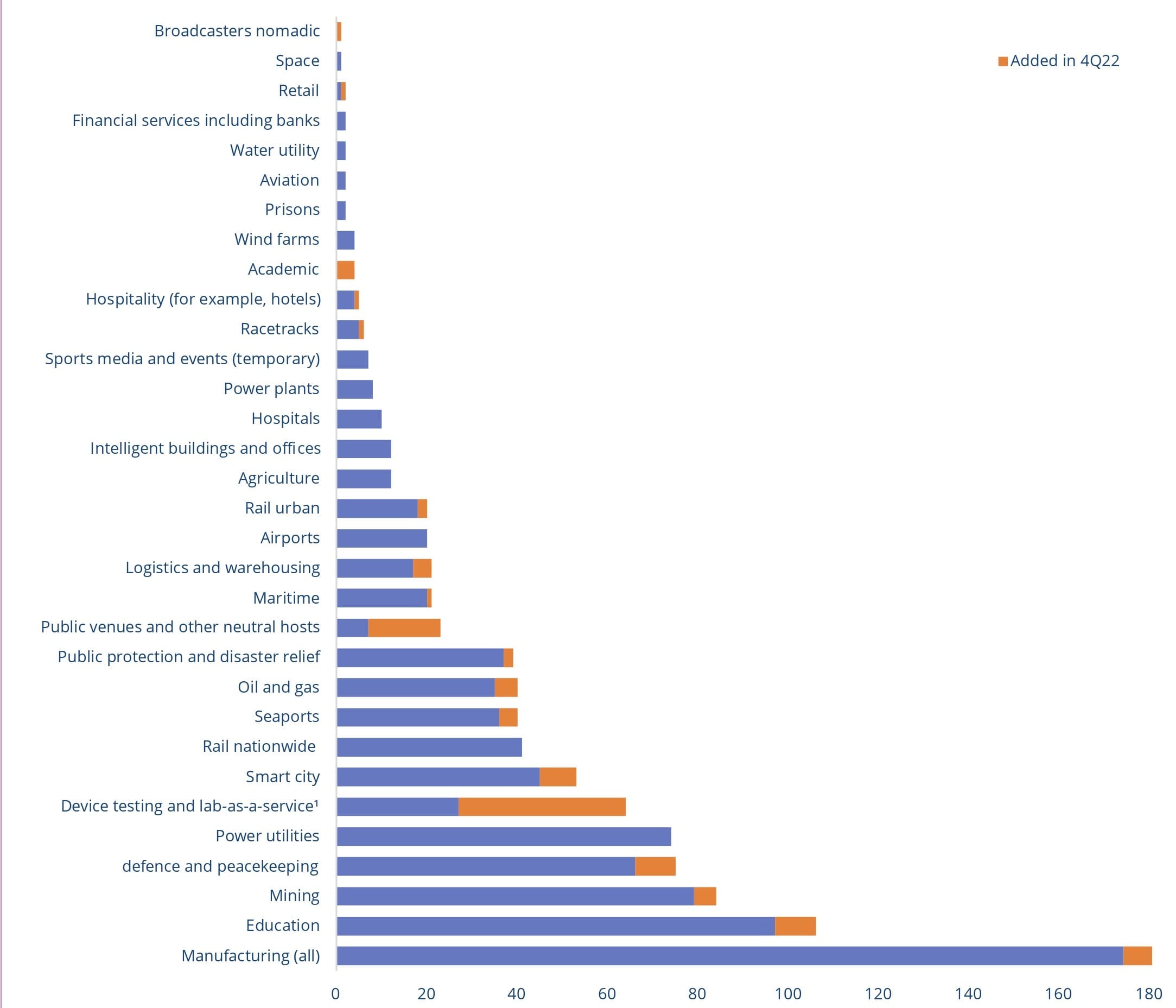5G is perhaps the most democratic generation of networks yet. On one side, 5G is taking the mobile broadband experience for netizens to unprecedented heights; on the other, it is helping businesses digitally transform in the true sense. The flexibility of 5G networks standing on the pillars of eMBB (enhanced Mobile Broadband), URLLC (Ultra Reliable Low Latency Communications), and mMTC (massive Machine Type Communications) allows businesses to customize and design their network depending on their use case requirement. Moreover, the 5G enterprise market is expected to grow at a CAGR of 33.9% from 2021 to 2028 and reach approximately $17 billion by 2028, a testament to the 5G utility for enterprises. From enhancing the retail experience for customers to identifying and resolving potential problems using predictive maintenance, 5G for enterprise appear no less than the elder wand for businesses and their customers. In this Blog, we will discuss in detail the implication of 5G for different enterprise use cases.
Explore the Power of 5G: Actionable 5G Use Cases for Enterprise Success
Revolutionizing Manufacturing with Industry 4.0: 5G Empowering Futuristic Automation
Industry 4.0 and IoT devices require high-speed and low-latency 5G networks to automate manufacturing, improve overall efficiency, and reduce downtime. The ability of the 5G network to track inventory in real-time, conduct the root cause analysis of any problem, and even process data from multiple machines to perform predictive and prescriptive analytics will reduce the cost of quality and optimize resources and increase yield for manufacturers. Moreover, using 5G for enterprises the robotic arm, movement of material using AGVs, and intelligent geotagging of products realize all futuristic Industry 4.0 use cases.
Transforming Healthcare: 5G Revolutionizes Remote Medical Services
The possible use cases of 5G extend from remote surgery to connected ambulances. Still, the most visible 5G application in healthcare is the Telemedicine use case, provisioning superior medical services in remote areas and removing the time and travel barrier for patients. Remote consulting and collaborative remote surgeries can bring the required expertise to remove the digital divide and save precious human lives. These use cases can also save numerous lives at disaster relief health management camps, such as earthquakes and tsunamis.
Reinventing Retail: 5G Transforms Experiences, Fuels Customer Insights, and Optimizes Inventory Management
The success of e-retail has put pressure on brick-and-mortar stores to create an immersive and engaging in-store experience for their customers. 5G-enabled AR/VR Experiences and contactless checkout from anywhere can help retailers associate a memorable experience in the mind of their consumers. Smart IoT devices and Video analytics can help retailers generate valuable customer insights for Customer Profiling & Segmentation and introduce innovative customer-centric products. Video analytics and sensors using 5G for enterprises can also help track and manage inventory by notifying the store executive promptly to replenish or replace the products from the shelves.
Redefining Logistics: 5G Revolutionizes Real-time Tracking, Enhanced Visibility
Tracking the real-time location of shipments is one of the most pervasive issues faced by logistics service providers globally. According to an estimate by T-Mobile, 77% of firms had limited to zero visibility into their supply chains. The lack of visibility on the movement and status of the goods often leads to delayed and damaged deliveries. The improved low latency, time-sensitive IoT devices enabled with 5G technology gives enterprises more control over the supply chain. The supply chain 4.0 application utilizing next-gen portable IoT devices will provide real-time location and status of cargo, tracking all the important metrics such as humidity and temperature or dynamic rerouting. The real-time information on the fleet has become equally crucial as the fuels powering them by averting or mitigating the potential factors that may give rise to a complication.

Source – GSA Report
5G Technology Tailors Networks for Enhanced Enterprise Capabilities
Each industry's unique requirements can be catered to by 5G technology. Private 5G networks provide a secure, high bandwidth, low latency, and reliable enterprise captive network. The dedicated network enables enterprises to perform computationally demanding tasks such as AI-driven defect detention for manufacturers, AGV-enabled Ports, remote-controlled surgeries, or immersive retail experiences. However, wide area-type networks will require network slicing competence to tailor the network for fulfilling customized network requirements.
Final Words
5G is catalyzing the digital transformation for business, realizing futuristic 5G use cases which were just science fiction a few years back. But the uniqueness of each industry makes it impossible to have a one size fits all approach. The special network requirements of each sector and each use case can be addressed with solution specific 5G technologies. Share your opinions on 5G's impact on Enterprises and what kind of network it requires.